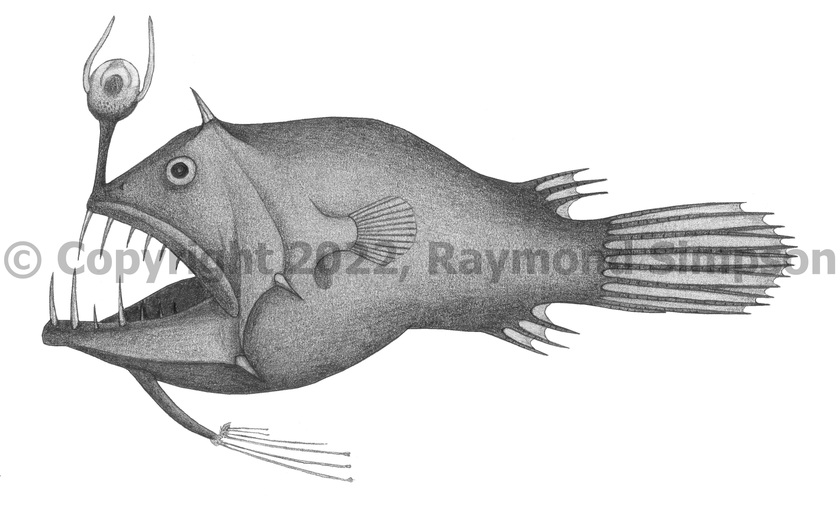
Common Name
Twohorn Leftvent
Year Described
Parr, 1927
Identification
Dorsal Fin: 3 (rarely 4)
Anal Fin: 3 (rarely 2 or 4)
Pectoral Fin: 15-16
Caudal Fin: 2 simple + 4 branched + 3 simple (last short)
Branchiostegal Rays: 5 (rarely 4)
Females: Body nearly globular with a huge head. Mouth huge and oblique (more than a third of body length), with several rows of well spaced teeth varying from long to short. Vomer with long teeth. Head with strong sphenotic spine. Spines on quadrate and articular absent. Two strong spines on rear edge of preopercle. Illicium short but present, with pterygiophore almost completely buried in skin of head. Esca with large bulb and no distal appendages or filaments. Posterior and anterior escal appendages absent. A simple tapering filament on each side of bulb. Hyoid barbel well developed and moderate (20-32% SL). Barbel single and unbranched at base. Tip slightly enlarged and bifurcated, with 2-4 sets of long paired filaments. Numerous short stumpy filaments on tip of main barbel. Photophores cover distal filaments of all sizes. Pectoral fin small and inserted high on body beyond midpoint. Dorsal and anal fins far back near caudal fin base. Caudal fin has simple and branched rays. Skin completely smooth (lacks spinules, bristles, or bucklers). Vent on left side of body (unique to family).
Males: tiny and parasitic. Body elongated. Olfactory organs well developed. Barbels absent in adults. Jaw teeth present in free living males.
Color
Body dark brown to blackish. Esca, hyoid barbel, head spines, and caudal fin whitish. Esca and hyoid barbel bioluminescent.
Size
Females range from 27-185mm SL. Males range from 18-30mm SL.
Habitat
Deep midwater from 620-1300m.
Range
Known from Canadian waters to off North Carolina and Bermuda. Not known from outside the Atlantic Ocean.
References
Pietsch, T.W. 2009. Oceanic Anglerfishes: Extraordinary Diversity in the Deepsea. University of California Press. 557pp.